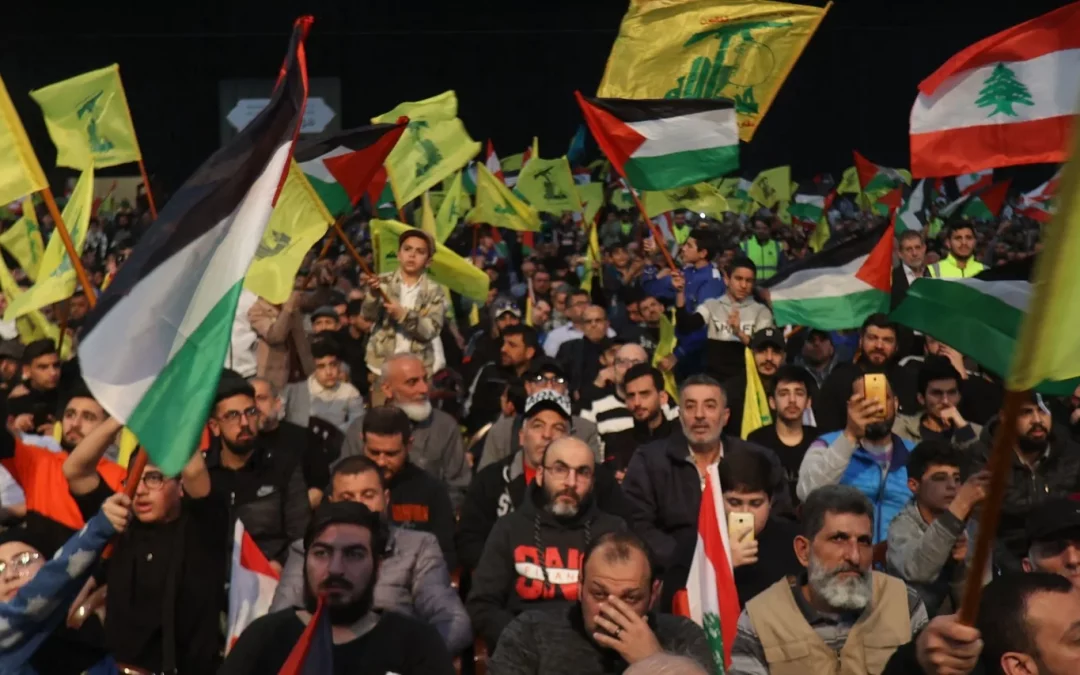When was the most recent deadly attack?
On July 27, a Hezbollah rocket attack killed 12 Druze children and teenagers and injured 29 others at a soccer field in Majdal Shams in the Golan Heights in Northern Israel. Hezbollah initially claimed responsibility but later denied it when it was revealed the victims were Druze children. Since October 8, Hezbollah has fired 6,000 rockets into Israel. The IDF confirmed the rocket was an Iranian Falaq 1, which Hezbollah possesses, and provided photographic evidence. Prime Minister Netanyahu vowed a harsh response.
Who is Hezbollah?
Hezbollah, an Iranian proxy, is a Shia Islamist terrorist group based in Lebanon. Created in the early 1980s with support from Iran’s Islamic Revolutionary Guard Corps, Hezbollah receives significant financial support, military training, and advanced weaponry from Iran. The US designated Hezbollah as a terrorist group in 1997.
Who are the Druze?
The Druze are an Arab religious group with a distinct faith that originated in the 11th century, incorporating elements from various philosophies and religions. The Druze community has significant populations in Syria, Lebanon, and Israel. The Druze in Majdal Shams consider themselves residents of Israel. Druze make up about 2% of the Israeli population.
How is Hezbollah a strategic threat to Israel?
Hezbollah has a substantial arsenal, including rockets, missiles, and drones, capable of reaching deep into Israel. It also possesses surface-to-air missiles and has dug tunnels along the Israeli-Lebanese border for surprise attacks. Hezbollah’s guerrilla tactics, combined with these capabilities, make it a significant threat to Israel.
Just how dangerous is Hezbollah?
Hezbollah’s arsenal includes between 130,000 and 150,000 rockets and missiles, significantly more than Hamas. These weapons can overwhelm Israel’s defence systems and cause severe civilian casualties. Some weapons are stored in civilian areas in Lebanon, complicating Israeli efforts to target them without causing civilian harm. Hezbollah’s arsenal includes:
- Rockets and Missiles: Both unguided and precision-guided.
- Drones: Capable of bombing missions.
- Surface-to-Air Missiles: Used to target Israeli aircraft.
How is Hezbollah linked to local Palestinian interest groups at UCT?
In March 2024, Dr. Ibrahim al Mousawi, a Lebanese MP representing Hezbollah, addressed the Palestinian Solidarity Forum (PSF) at the University of Cape Town (UCT) via Zoom. Al Mousawi is the editor of Hezbollah’s newspaper al-Intiqad and has been a spokesperson for over 25 years. He spoke alongside Hamid Rizq, a spokesperson for the Houthi movement. Hezbollah flags have been displayed at PSF events on UCT campus. The PSF, aligned to the antisemitic BDS movement, is one of the main organisations driving the academic boycott campaign at UCT.
How have Hezbollah’s attacks escalated since October 7?
Since October 7, Hezbollah has increased rocket and drone attacks on Israel in support of Hamas, threatening a full-scale Middle Eastern war. The conflict has led to border skirmishes and heightened alerts for both Israeli and Lebanese forces. Israel has conducted airstrikes on Hezbollah fighters and installations in Lebanon.
Displacement of Israelis on the Northern Border
Over 60,000 Israelis near the northern border with Lebanon have been relocated due to Hezbollah threats, highlighting the conflict’s severe impact on civilians and the strain on Israel’s emergency response systems.
Where is the Golan Heights?
The Golan Heights was captured by Israel during the 1967 Six-Day War and officially became part of Israel in 1981. The US recognised Israeli sovereignty over the region in 2019. It is home to over 55,000 Israelis and Druze people.
The Golan Heights holds significant historical and cultural value for the Jewish people, with archaeological sites including ancient synagogues and communities dating back thousands of years. Its elevated terrain provides critical military advantages, serving as a buffer against attacks from Syria and offering a vantage point for monitoring enemy movements. The region’s rich history and strategic importance underscore its integral role in Israel’s security and heritage.
Image credit: https://www.ajc.org/news/what-to-know-about-hezbollahs-escalation-against-israel


